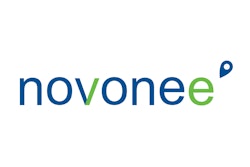
When I'm consulting with a new practice, one of my biggest pet peeves is hearing a team member say that this is how we've always done something and it works.
And then another statement follows: "If it ain't broke, don't fix it!"
I agree, if something isn't broken -- and your practice is humming along with great production and collection numbers -- then I probably wouldn't say anything needs fixing, either. However, do you know that a little tweak in your systems could make a significant difference in the cash flow of the office?
Collection rate and cash flow
When I started working at my second dental practice, I was pulled into the doctor's office and informed that the doctor had not received a paycheck in more than four months. No pressure there.
 Dayna Johnson of Rae Dental Management.
Dayna Johnson of Rae Dental Management.There were many things that needed fixing, and over the next couple of years I did my best to improve the collection rate, eventually getting it up to an average of 99% year to date. The one thing the practice was still struggling with, though, was cash flow.
There is a big difference between collection rate and cash flow. I learned this because, toward the end of every month, our bookkeeper was always transferring money to make the end-of-month payroll.
The only way I was taught to collect money is to make sure insurance claims go out on time and send out patient billing statements. I was at the point where I would rather scrub toilets than send out billing statements, but it was all I knew. It was how it had always been done. The practice did a statement run at the beginning of every month, reviewed all the statements, printed them, and sent them off.
The billing statement system was the thing I hated the most about my job at the dental office, and I was looking for a system change. By then, we had converted to the Dentrix (Henry Schein One) practice management software, and I was learning something new every day.
While the practice was doing better, I still dreaded the first week of the month because I knew I had to print, stuff, stamp, and mail the billing statements and then field phone calls for the next week. I was in search of a new system to make my life easier, so I started searching on the American Association of Dental Office Management forum and other chat groups to see how other people were doing it.
I found that a lot of people were splitting up the alphabet and doing a section of the database each week. That sounded better than how I was doing it, but it still seemed like a lot of work. It got me thinking, though, and I did like the idea of sending out statements each week instead of all at the beginning of the month.
Eureka
“A little tweak in your systems could make a significant difference in the cash flow of the office.”
And then I found the magic wand that solved everything. In the Dentrix software, every time you print or send a billing statement to a family the last statement date automatically updates, so you can always see when the family received a bill.
This was perfect because I could set the search parameters for my billing statements to look at the last statement date and decide when the family should receive a bill. This eliminated the need to remember which letter I ended on when I sent statements previously because the system was only looking to see which people had not received a billing statement within the last 30 days. I was amazed.
I started sending billing statements on Monday afternoon, after I posted the weekend mail, and then again on Thursday or Friday afternoon, before the weekend. I was able to set my last statement date for a 30-day cycle so that anyone in my database who had not received a billing statement in the past 30 days would receive a bill. So I was generating billing statements twice a week instead of once a month.
This new system resulted in three major improvements:
- Cash flow: It improved our cash flow because the patients who owed us money would receive a statement faster than having to wait until the first week of the month. Our patients still only received a billing statement every 30 days, but some patients might get one on the fifth of the month, one on the eighth, and one on the sixteenth. Our bookkeeper was extremely happy because there was money coming in all month long.
- Workflow: It evened out the phone calls we received. Since I wasn't sending 200 statements at the same time, it spread the phone calls out throughout the month. This improved my workflow a great deal.
- Efficiency: Since I wasn't sending out 200 statements at the same time, I didn't have to worry about blocking out days to sort through them all. I could now spread the task to a daily or weekly project, and I was much more efficient in my day.
It took me a while, but I learned to seek out new systems that would improve the workflow in the office and help my sanity on a daily basis.
Maybe how your office has done things in the past is not the best or most efficient way to perform certain tasks now. Running billing statements is just one example of how you can improve the profitability in your practice. Think about all the possibilities. Remember, how you learned something five, 10, or 20 years ago might not be relevant now. Keep learning and growing to find the best possibilities for your practice today.
Tips for Dentrix users
If you are a Dentrix user and wondering how you can start this in your practice, follow these steps:
- Go to the Office Manager.
- Click on Reports.
- Click on Billing.
- When the window opens, set your parameters for selecting the patients who will receive statements.
It is in this window where you will want to make sure you have checked "If Not Billed Since." My advice is do not change this date. It will default to one month ago, and this is what you want it to do. All the other settings in this window are personal preferences for your office.
Dayna Johnson is the founder of Rae Dental Management and of Novonee, a Dentrix Online community. She can be reached via email here.
The comments and observations expressed herein do not necessarily reflect the opinions of DrBicuspid.com, nor should they be construed as an endorsement or admonishment of any particular idea, vendor, or organization.


















